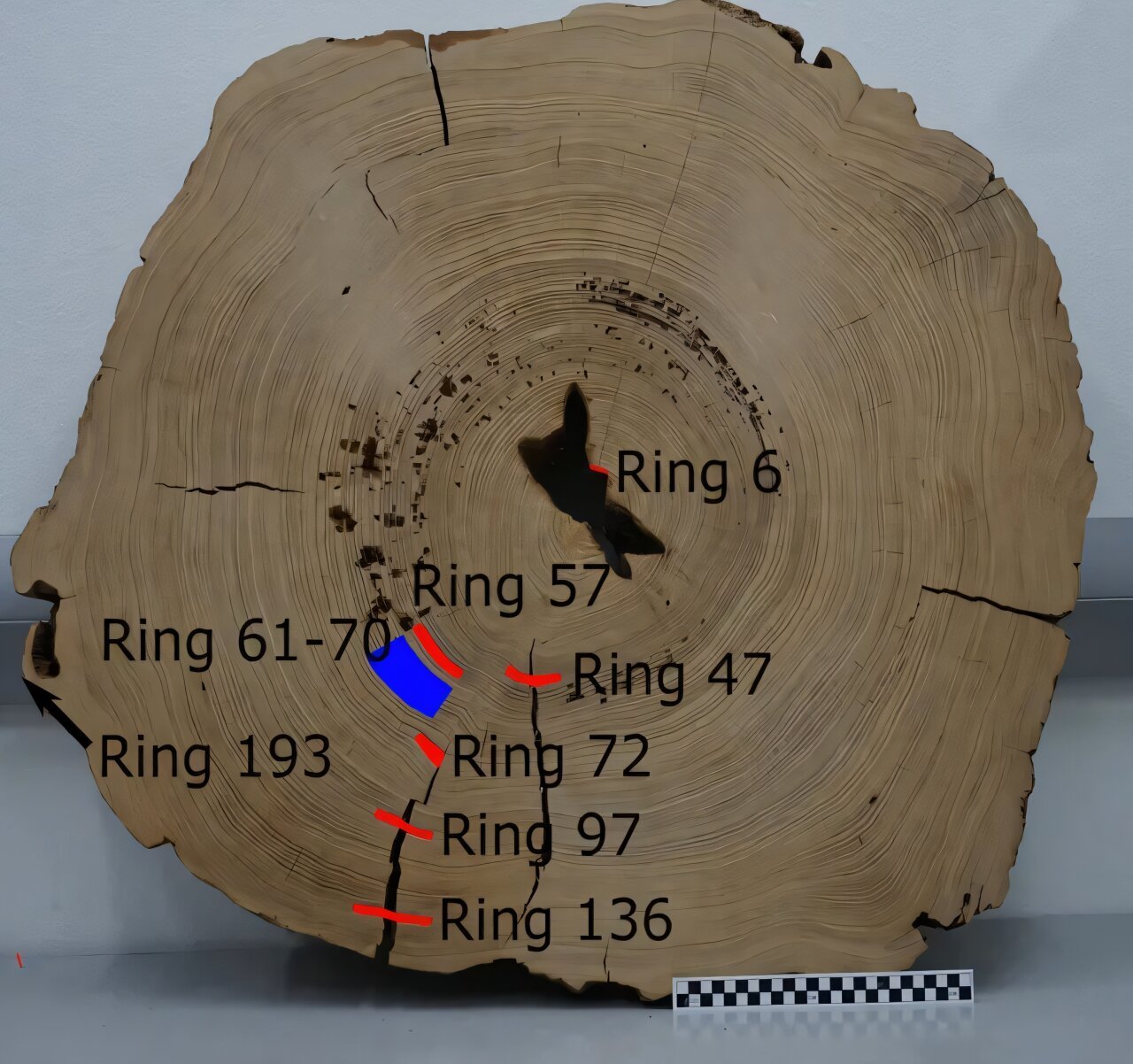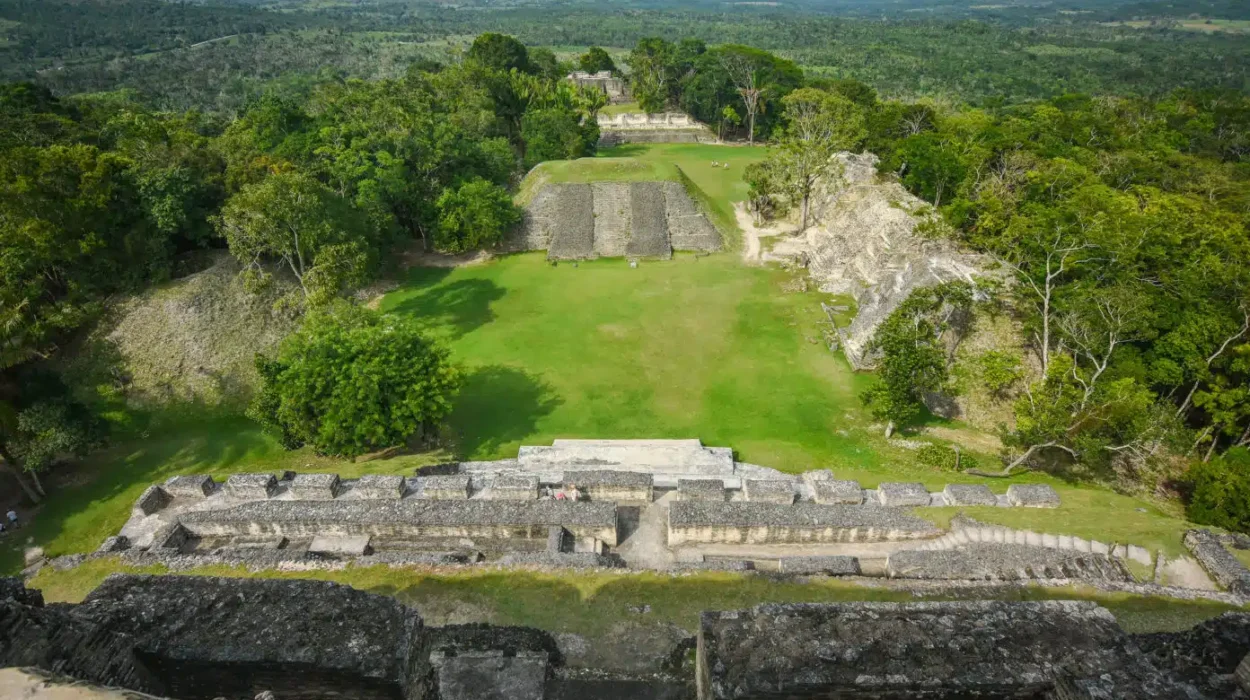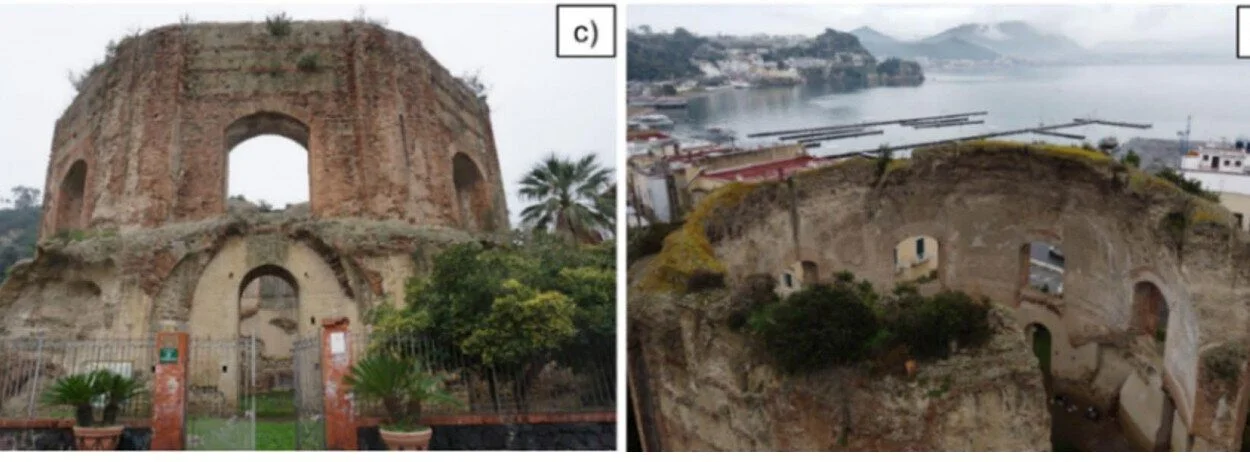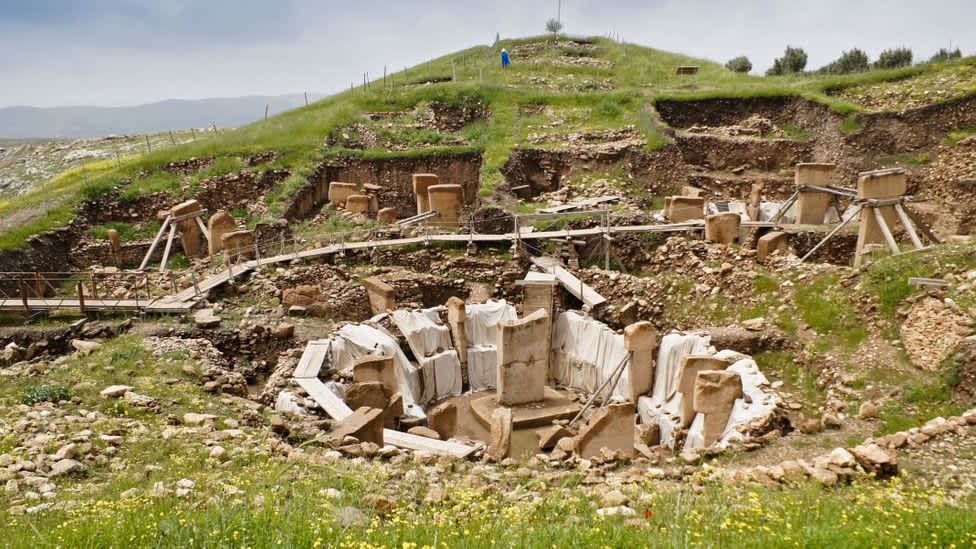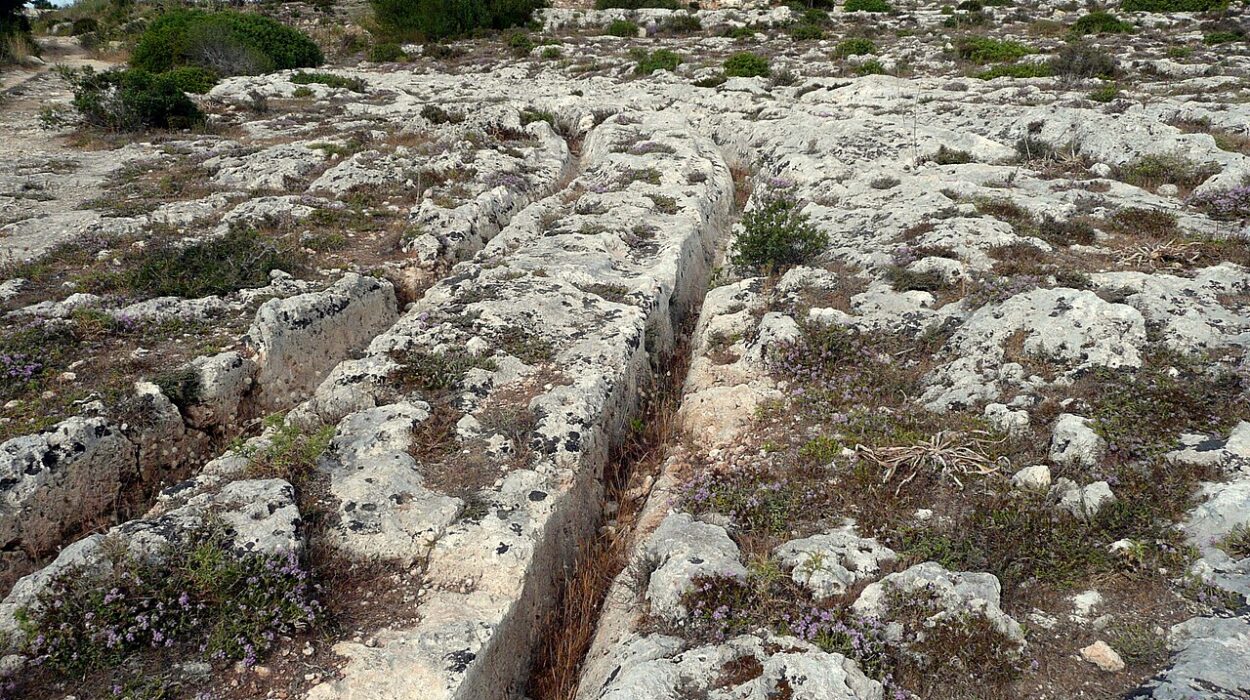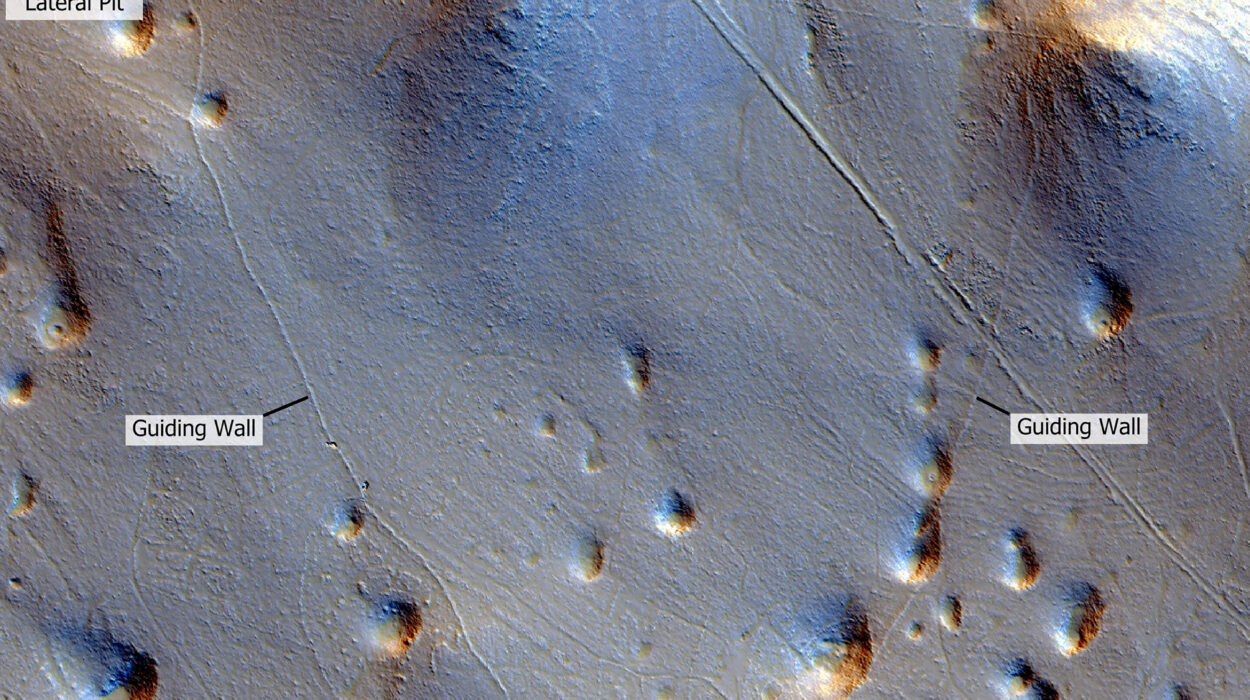Long before the rise of skyscrapers and concrete cities, in the green expanse of the Mississippi Valley, a civilization flourished that few outside archaeological circles truly understand. Around 1050 CE, an ancient North American city called Cahokia rose from the fertile floodplains near what is now St. Louis, Illinois. At its peak, Cahokia was a metropolis of more than 20,000 people—larger than medieval London or Paris. It was the beating heart of a complex, interconnected world that stretched from the Gulf of Mexico to the Great Plains.
Cahokia was a city of mounds, monuments, and mystery. It was a center of religion, trade, and innovation, a place where earth and sky were joined through architecture and ceremony. Among its wonders were the marker posts—massive wooden poles carved from ancient trees and set deep into the ground. These towering symbols stood as silent sentinels over plazas and temples, representing more than simple craftsmanship—they embodied a worldview, a connection between humans, the natural world, and the spiritual cosmos.
The Ancient Architects of the Midwest
Dr. Nicholas Kessler and his team have been working to understand these wooden giants, examining what remains of one of the largest marker posts ever found from Cahokia’s past. Their findings, recently published in PLOS One, shed new light on how far-reaching, sophisticated, and spiritually rich this early North American civilization truly was.
Cahokia’s rise was astonishing. Within just a few decades in the late 11th century, a collection of small farming villages transformed into a sprawling urban center. Immigrants from distant lands poured in, drawn by opportunity, faith, and community. Archaeological evidence shows that newcomers made up nearly a third of the population during Cahokia’s golden age.
At its height around 1100 CE, the city boasted Monks Mound, a massive four-terraced structure standing nearly 30 meters tall and covering more than 14 acres—still the largest earthen construction in the Western Hemisphere. The city thrived on trade, agriculture, and religion, producing fine pottery, stone tools, and intricate shell ornaments that traveled along vast exchange networks. Its influence spread far and wide, reshaping the cultural landscape of the continent.
The Sacred Poles of Cahokia
Among Cahokia’s most mysterious creations were its marker posts—giant wooden poles carved from tree trunks and erected in plazas, near temples, and atop pyramid mounds. These poles were not mere decorations or boundaries. They were spiritual beacons, deeply embedded in Indigenous cosmology.
Dr. Kessler explains that in many Native American traditions, poles and posts hold sacred significance. They are seen not just as physical structures but as living entities—representations of ancestors, deities, or cosmic pillars linking the heavens, the earth, and the underworld. In this worldview, a pole could serve as an axis mundi, a world axis through which spiritual power flowed.
Such poles played central roles in rituals—ceremonies of renewal, festivals of fertility, and acts of devotion. People danced around them, left offerings at their base, or even climbed them in athletic and spiritual displays. The poles stood as bridges between worlds, binding the community to the cosmic forces they revered.
The Discovery of the Mitchell Log
One of the most fascinating remnants of this sacred tradition is a colossal timber known as the Mitchell Log. Discovered at the Mitchell site, near Cahokia, this log is believed to be the largest marker post ever found from ancient North America.
Today, only a portion of it remains—about 3.5 meters long and weighing roughly one metric ton. But originally, it was truly monumental, stretching nearly 18 meters in length and weighing between four and five tons. Imagine the effort it must have taken for ancient workers, without metal tools or draft animals, to fell such a tree, transport it across miles of land and water, and raise it high into the sky.
The log was made from bald cypress, a tree not native to the Cahokia region. This discovery immediately suggested a remarkable story of connection and mobility.
Tracing the Journey of a Sacred Tree
Through radiocarbon dating and strontium isotope analysis, Dr. Kessler and his team traced the origin and age of the Mitchell Log with astonishing precision.
The results showed that the tree was felled around 1124 CE, during Cahokia’s peak period of urban and ceremonial development. When it was cut down, the tree was already nearly 194 years old—a living witness to centuries of growth before it became part of human ritual.
Isotope analysis revealed that the bald cypress likely came from a region far to the south—perhaps southern Missouri, northern Arkansas, western Tennessee, or southern Illinois. The nearest source would have been at least 180 kilometers away.
How, then, did the Cahokians move such an enormous object across such great distances?
Dr. Kessler suggests that the people of Cahokia may have floated or rafted the log upriver through the Mississippi’s network of sloughs and backwaters. The bald cypress grows naturally in swampy bottomlands, making it ideal for water transport. Alternatively, they might have carried it overland along established trails that connected Cahokia with surrounding communities. Both possibilities demonstrate a high degree of coordination, labor organization, and logistical sophistication.
The Monumental Age of Cahokia
The timing of the Mitchell Log’s creation corresponds to the zenith of Cahokia’s power and influence. During the early 12th century, the city’s monumental building projects reached their height. Massive earthen mounds were being constructed, grand wooden temples were being erected, and regional trade networks were thriving.
Agriculture flourished as farmers cultivated maize on a scale never before seen in the region. Exotic materials—shells from the Gulf Coast, copper from the Great Lakes, and mica from the Appalachians—poured into the city, evidence of its vast reach.
The Mitchell Log, therefore, was not just a marker post. It was a symbol of an era—a tangible reminder of the time when Cahokia stood at the center of a cultural and economic web stretching across half a continent.
The Meaning Behind the Mitchell Log
For the people who raised it, the Mitchell Log was far more than a physical structure. It may have represented a cosmic connection—a link between the heavens, the earth, and the ancestral world below. It likely stood in a sacred space, perhaps in a plaza or near a ceremonial building, where rituals and gatherings took place.
Dr. Kessler’s research suggests that the Mitchell Log could have remained standing for one or two generations, perhaps until around 1150 to 1175 CE, before natural decay or intentional removal brought it down.
This timeframe coincides with a broader transformation within Cahokia. Archaeological evidence shows that around the mid-12th century, many ceremonial structures were abandoned, and social and political changes swept through the region. The once-great city began to fragment, its population dispersing as resources dwindled and environmental pressures mounted.
The fall of the Mitchell Log, then, may have symbolized the waning of Cahokia’s power—the fading of a city that once reached for the sky.
The Mystery of Cahokia’s Decline
Why did this magnificent city fall? The question continues to haunt archaeologists. There is no single answer. Some evidence points to environmental stress—flooding, droughts, and deforestation caused by overexploitation of the land. Others see signs of social upheaval, as internal divisions and shifts in leadership destabilized the community.
Trade networks may have collapsed, and the city’s spiritual authority may have weakened. Whatever the cause, by 1350 CE, Cahokia was largely abandoned, its plazas silent and its temples crumbling. Yet the echoes of its culture lived on, carried by the descendants of its people across the Midwest and beyond.
The Mitchell Log, then, stands as both a relic and a testament—a symbol of humanity’s desire to connect with forces greater than ourselves, to leave behind a mark that endures beyond time.
The Legacy of Cahokia
Today, the mounds of Cahokia still rise above the landscape, silent and solemn, their shapes softened by centuries of wind and rain. But beneath the soil lies evidence of an astonishing civilization—urban planners, engineers, astronomers, farmers, and artists who shaped the heart of North America long before European contact.
Dr. Kessler’s work on the Mitchell Log adds another chapter to this story. It reveals not only the ingenuity of Cahokia’s builders but also their deep relationship with the land, the rivers, and the cosmos. It shows a people who could move mountains—literally and spiritually—to construct monuments that spoke to their beliefs, their unity, and their ambition.
Reconnecting with the Ancient World
Cahokia challenges our assumptions about the past. It reminds us that cities, innovation, and cultural complexity were not exclusive to Europe, Asia, or Mesoamerica. They thrived in the heart of North America, built by Indigenous peoples whose legacy continues to shape the continent’s story.
The study of the Mitchell Log is not just an archaeological discovery—it is a rediscovery of human potential. It invites us to look deeper into our shared history, to see the sophistication and spirit that once animated these ancient builders.
As we stand today among the remains of their city, we can almost imagine the great poles rising once again—reaching toward the sky, connecting earth and heaven, whispering through the centuries a message of resilience, creativity, and faith.
More information: Nicholas V. Kessler et al, Age and origin of a Cahokian wooden monument at the Mitchell site, Illinois, USA, PLOS One (2025). DOI: 10.1371/journal.pone.0333783
